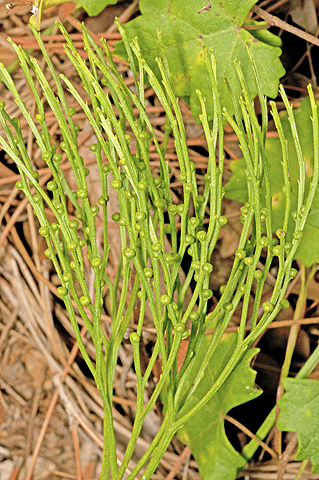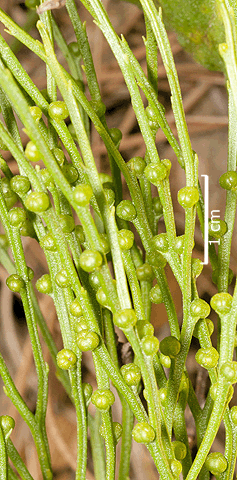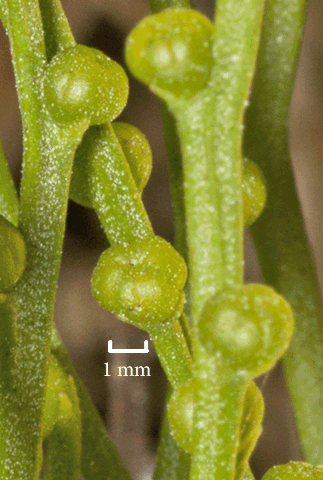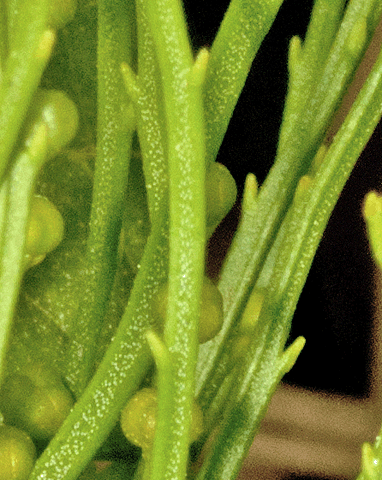Psilophytes (Whisk Fern) in the Christopher B. Smith Preserve
Psilophyte Characteristics: Whisk ferns have alternating generations of gametophytes and sporophytes. We normally see the sporophytes. They grow 30 cm and taller. A whisk fern is the only living vascular plant that lacks both roots and leaves. Instead of roots, it has horizontally creeping stems, called rhizomes.The erect portion of each stem bears pairs of outgrowths that look like miniature leaves, but lack vascular tissue. Above the outgrowths are spore-producing organs.
Following spore dispersal, gametophtes emerge from the spores. Gametophytes are very small, usually less than two mm long. They are subterranian and saprophitic. When the gametophyte reaches sexual maturity, an egg and sperm cells are produced. Self and cross-fertilization occur. Once a sperm unites with an egg cell, a new sporophyte is created.
Recent developmental and molecular studies support the idea that whisk ferns may have had fern-like ancestors. Today, whisk ferns grow in tropical and subtropical regions and live on rich soil or as epiphytes. There are only two genera in the world and only one in North America, Psilotum.
Interactions in the Smith Preserve: Like other plants, psilophytes convert energy of sunlight to energy other organisms can use. The conversion process is photosynthesis and the energy produced is distributed to animals through the food web. Also during photosynthesis, whisk ferns produce oxygen. In addition, psilophytes provide habitat for other organisms. Terrestrial whisk fern rhizomes hold soil in place which prevents soil erosion. Epiphytic whisk ferns typically live at the base of trees, where their rhizomes help trap and hold forest debris that eventually becomes soil. The gametophyte stage of psilophytes forms a symbiotic relationship with soil fungi.
Phylum |
Family |
Species Name |
Common Name |
Psilophyta |
Psilotaceae |
Psilotum nudum |
Whisk Fern |
Psilotum nudum Whisk Fern
|




